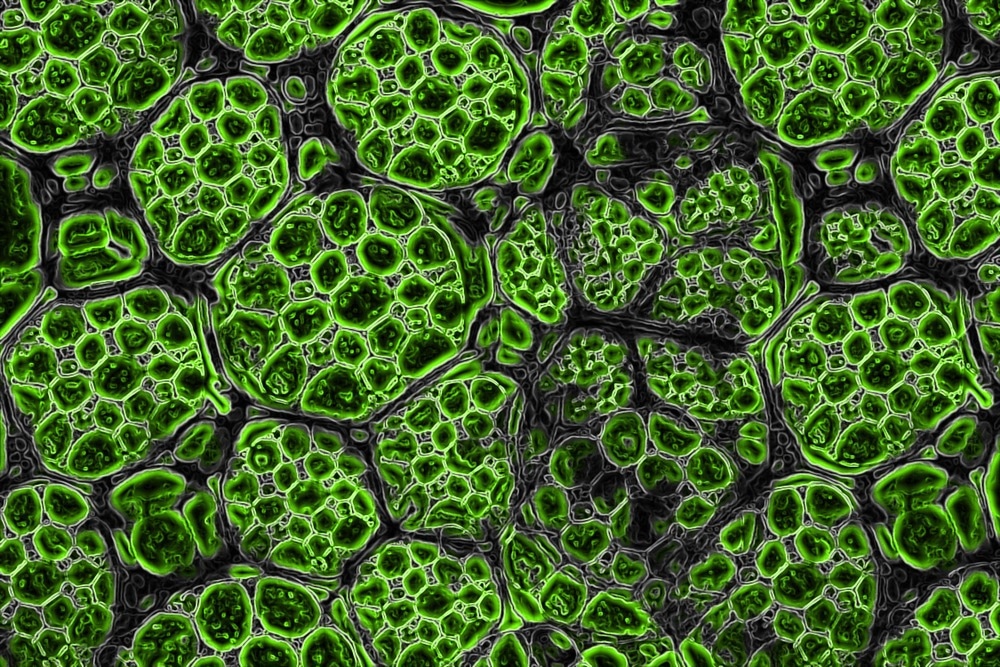Although nanometer quantum emitters are useful for monitoring biochemical activities, their use for single-unit measurements is restricted by fluorescent intermittency, high numerical aperture (NA) targets, and low photon collecting efficiency.

Study: Photonic crystal enhanced fluorescence emission and blinking suppression for single quantum dot digital resolution biosensing. Image Credit: GiroScience/Shutterstock.com
A recent study published in the journal Nature Communications tackles this problem by reporting a roughly 3000-fold signal augmentation using a photonic crystal (PC) surface through multiplicative contributions of quantum efficiency increase, improved excitation, and blinking suppression.
Nanoscale Fluorescent Emitters: Overview and Significance
Fluorescent emitters centered on chemicals and nanoparticles, such as a single quantum dots, are widely used in biological sciences and diagnostic procedures. Photon-generating tags enable the viewing and quantification of biological substances by connecting the fluorescent emitter to a target analyte and detecting it with an optical sensor.
Single quantum dots provides many important optical features for digital sensing systems, such as excellent photostability, high absorptivity, and high quantum effectiveness.
Enhancing fluorescent emitters by photonic surfaces and nanostructures via locally boosted electromagnetic field strengths is an efficient method for reaching lower detection limits in biomedical sensing. Aggregating multiple fluorophores or using enzymatic amplification to create huge amounts of fluorescent emitters from a single substance are common sensing techniques.
Challenges Associated with Enhancement of Fluorescent Emitters
Recently, many studies have focused on improving the activation of fluorescent emitters, collecting their photon emission effectively, and generating signals that allow them to be viewed in the presence of a range of noise sources.
Total internal reflection fluorescence (TIRF) imaging, for instance, uses costly electron-multiplying charge-coupled (EM-CCD) cameras to obtain single fluorophore accuracy. However, this approach can only produce a 30x boost in signal-to-noise levels.
Plasmonic nanoparticles have also been shown to be effective for a localized increase of electric field strength with fluorescence augmentation factors ranging from 100 to 1000. However, many plasmonic devices exhibit substantial non-radiative decay owing to inherent metal defects, quenching, and poor photon directionality. Furthermore, the size, structure, and material of such nanoparticles determine their resonance frequency.
Highlights of the Current Study
To solve the problems associated with amplifying single fluorescent emitters, the researchers developed a microscopy-based technique using a photonic crystal (PC) across broad surface regions. A 3000-fold increase in measured photon intensity from single quantum dot tags was achieved employing experimental characterization and electromagnetic calculations.
In this work, the researchers provide a single quantum dot sensing approach that provides digital precision of individual biomolecules with an optically augmented signal-to-noise ratio for extremely selective diagnosis of a cancer-specific miRNA target.
While many significant categories of low-concentration cancer biomarkers are currently being clinically validated, the researchers in this work concentrated on identifying circulatory microRNA (miRNA). With the emergence of liquid biopsy, miRNAs have the potential to be a viable cancer biomarker, with many publications linking miRNA abundance to important health issues such as cancer.
Key Developments of the Research
The researchers created a simple sensing system for single quantum dot tags that delivers up to 3000-fold augmentation of a single quantum dot emission by exploiting photonic crystal improvements in both near-field single quantum dot activation and far-field dispersion-guided outcoupling.
Despite a low numerical aperture of 0.5, the researchers successfully detected a single quantum dot, implying the realization of an affordable optical system that can provide the digital precision of individual target proteins for highly selective, fast, and medically significant miRNA identification.
The innovative photonic crystal and single quantum dot imaging platform created in this work do not need the high gain of a costly EMCCD camera, reducing the instrument's cost and complexity. The experiment was performed at room temperature without using an enzymatic target, resulting in a straightforward procedure. Because of the modest mass of single quantum dot tags, gravity-driven precipitation is reduced, leading to low background noise.
Future Outlook
The single quantum dot emission platform based on photonic crystals is not confined to a single wavelength. The enhancing effect may be extended to a wide variety of fluorescent species that use the same excitation wavelength by designing the spectral overlay and dispersion characteristics.
Although not the subject of this study, it is expected that the method explained here can be conveniently aggregated in the future by using single quantum dot tags with distinguishable emission spectra, with each single quantum dot color representing a diagnostic test for a unique miRNA target in the same lab test.
Reference
Xiong, Y. et al. (2022). Photonic crystal enhanced fluorescence emission and blinking suppression for single quantum dot digital resolution biosensing. Nature Communications. Available at: https://www.nature.com/articles/s41467-022-32387-w
Disclaimer: The views expressed here are those of the author expressed in their private capacity and do not necessarily represent the views of AZoM.com Limited T/A AZoNetwork the owner and operator of this website. This disclaimer forms part of the Terms and conditions of use of this website.